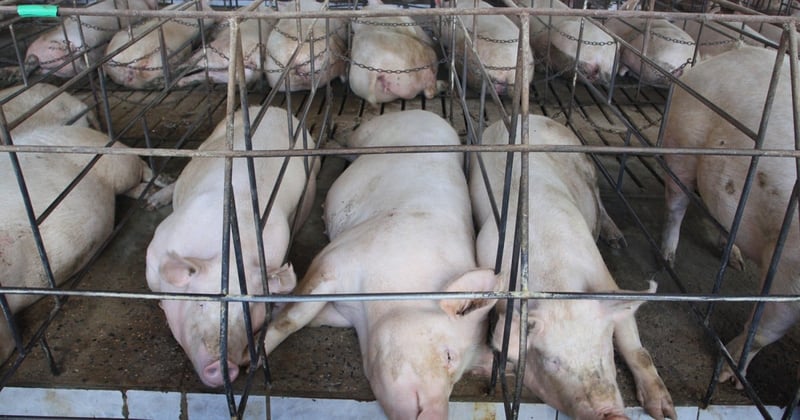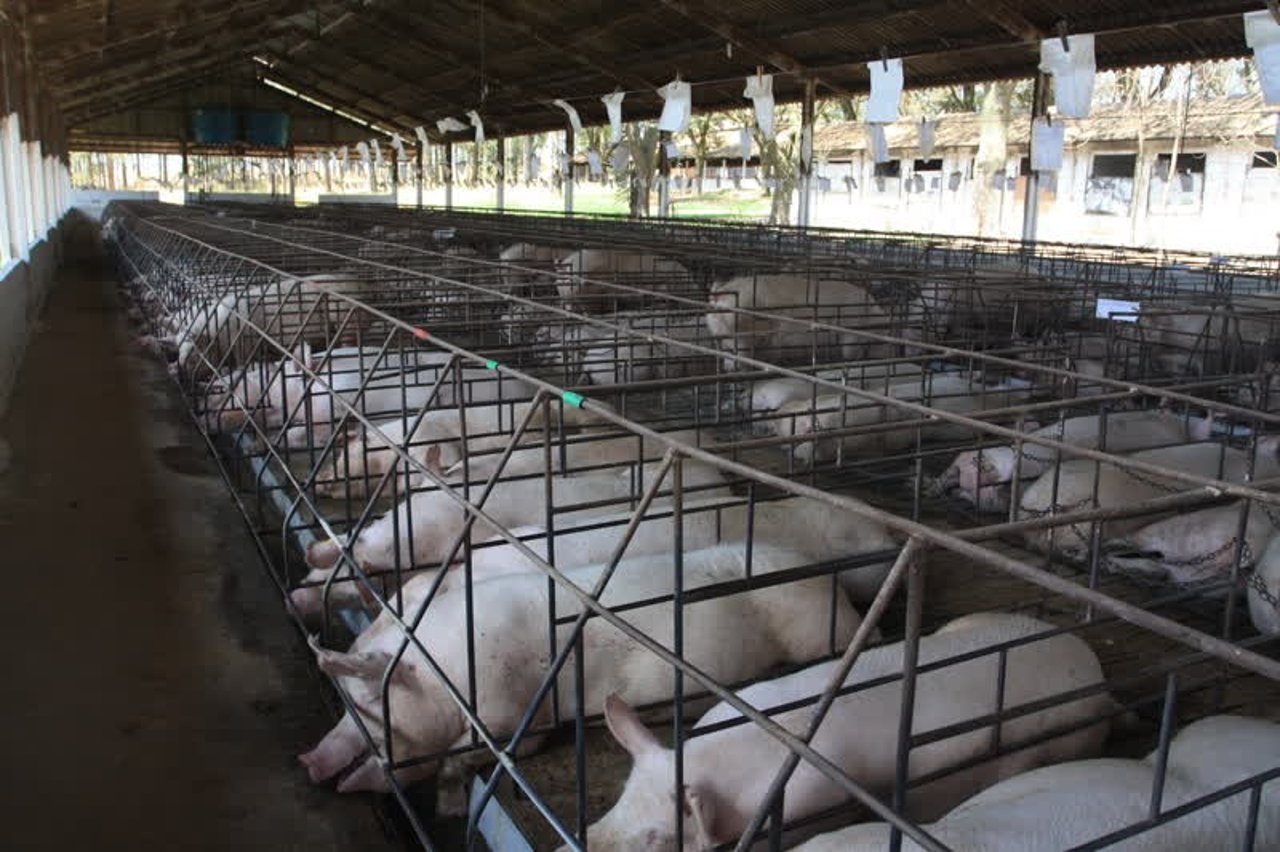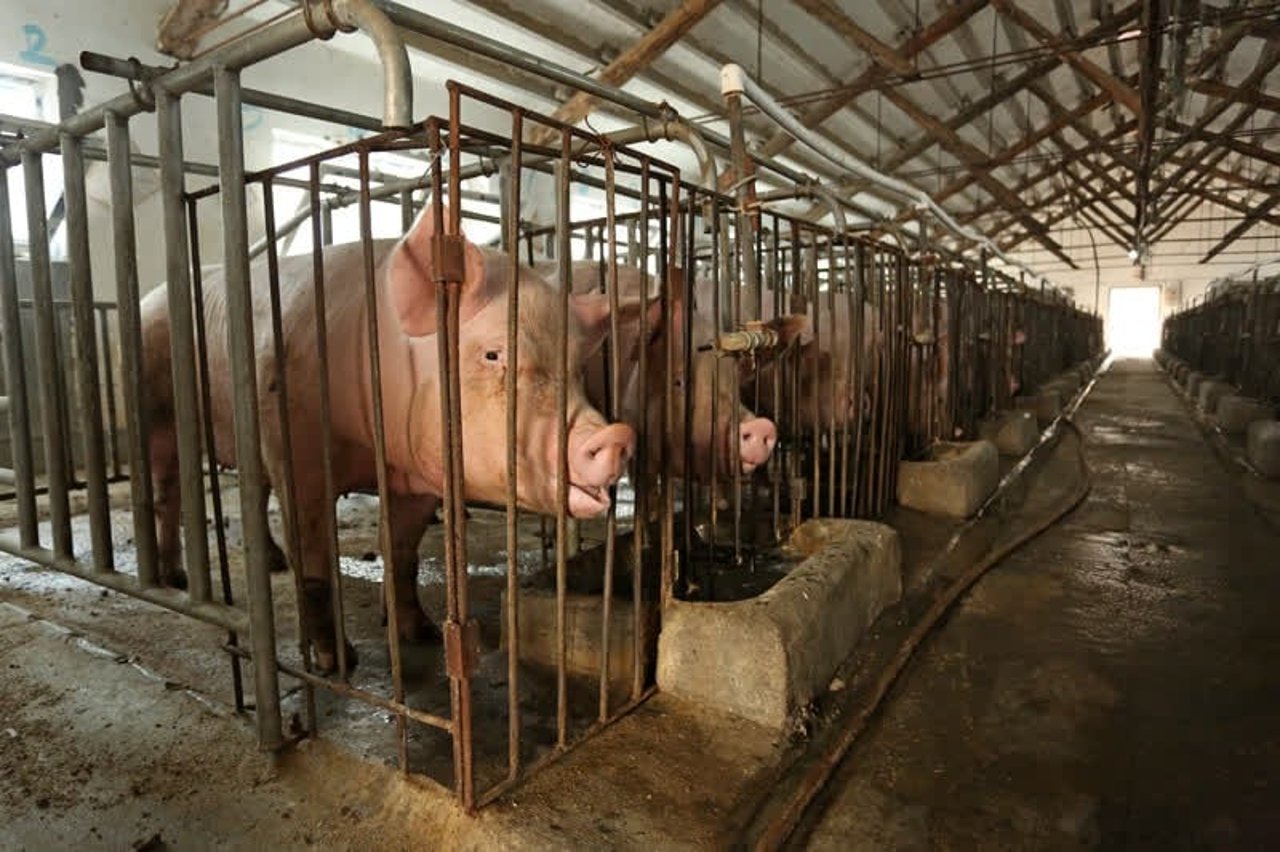
The heartbreaking life of a factory-farmed mother pig
Blog
The story of mother pigs in factory farming is a sad one. Tens of millions of pigs spend their entire adult lives in a space no larger than a fridge.
Cogs in a machine
Selectively bred to produce as many piglets as possible, a mother pig’s adult life begins when she is first impregnated. This is sometimes done when the pig is as young as eight months.
Far from natural breeding, she is forced into a small cage – a ‘sow stall’ – for this process where she is artificially inseminated. Over the course of multiple pregnancies, she will be moved from cage to cage for the rest of her short life. At a factory farm, she is just a breeding ‘machine’.
Alone in a sea of cages
Unable to turn around, female breeding pigs are caged and lined up with hundreds of sows in an enormous shed. Bars separate her from other pigs so she can’t form social relationships or seek comfort or security in groups. This is a major source of stress for pigs who are highly intelligent, social animals. They can’t escape or retreat, ever.
Each cage is no more than six feet long and less than 3 feet wide. It’s only slightly bigger than the sow’s body, and no bigger than a household fridge.
Mother pigs (sows) are kept in barren conditions with no enrichment on a low welfare farm.
Uncomfortable and in pain
These conditions are far from the comfortable grass bed sows would seek in nature. Pigs like to be clean, but a mother pig on a factory farm is forced to lie in her own excrement all day. She is cramped and develops shoulder sores from rubbing against the steel bars.
The concrete floor is hard, and she is confined there day in, day out. In frustration, she bites the bars of the steel cage that surrounds her.
In these cages, mother pigs live their whole lives unable to express natural behaviours, forage, or socialize with other pigs. They are kept alone in cages. Limited mobility and lack of exercise often leads to lameness, and their bleak life causes them to experience intense stress, self-inflicted injury, and depression.
This is no life for a pig.
Sows stand in their small, barren cages on a low welfare farm.
Giving birth in a cage
When it is time to give birth, sows are moved to yet another cage – the ‘farrowing crate’. Although their natural instinct is to build a nest for their piglets, the farrowing crate, similar to the sow stall, is a barren, concrete pen.
All natural mothering instincts are thwarted.
When the piglets arrive, the steel bars of the farrowing crate block sows from reaching them. They are unable to form a normal mother-piglet bond.
Babies snatched too soon
When sows’ piglets are just three weeks old, they are forcibly weaned and taken away from them. Sows are returned to the sow stall where the painful cycle repeats once more.
A sow will endure multiple pregnancies throughout her miserable life. This is until her body starts to break down and she is no longer of any use to the factory farming industry.
Help end this horror
This is the life of a caged mother pig. And there are hundreds in just one shed; thousands on a farm; tens of millions globally.
But this suffering is avoidable. Keeping mother pigs in groups, rather than in cages, is good for animals and business. There is no excuse for factory farming.
You can help end pigs’ suffering by eating less pork and by choosing higher-welfare pork when you do eat it. Less demand for pork from factory-farmed pigs means fewer pigs will suffer.
When the piglets arrive, the steel bars of the farrowing crate block sows from reaching them. They are unable to form a normal mother-piglet bond.

